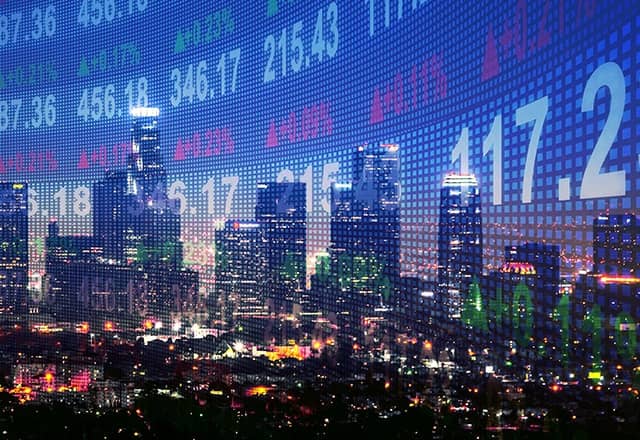(AOF) – Following the unilateral offer received from Ineos Enterprises on July 25, 2023 for the repurchase of 100% of the shares of Eramet Titanium & Iron (“ETI”), Eramet announces that it has sold its Norwegian subsidiary for a value of 245 million dollars. The transaction thus completed is final and is no longer subject to any conditions, all regulatory authorizations having been obtained by Ineos Enterprises prior to Eramet’s acceptance of the offer received.
ETI is a Norwegian plant processing ilmenite into titanium dioxide slag for the pigment industry. It also produces high purity cast iron for the European foundry market.
This sale, with immediate effect, allows Eramet to strengthen its balance sheet and will contribute to financing its projects in the metals necessary for the energy transition.
The agreement between Eramet and Ineos Enterprises also includes a long-term supply contract for ilmenite produced by Grande Côte Opérations, the Group subsidiary which operates the mineral sands mine in Senegal.
AOF – LEARN MORE
Key points
– Producer, created in 1880, of ores and alloy metals, powerful in manganese ore and ferronickel (1st in the world), in zircon and titanium materials (4th in the world);
–
Turnover of €5 billion, refocused on mining and metals – manganese for 63% of sales, nickel for 28%, mineral sands for 9%, lithium being under development;
– Sales made in Asia for 46% (including 21% in China), in Europe for 30% (including 6% for France), in South America for 13% and in North America for 6%
;
– Business model: based on the valorization of metals and minerals essential to economic development (manganese, nickel, mineral sands) and the energy transition (lithium, nickel/cobalt salts, battery recycling);
– Capital jointly controlled at 62.51% by the French State Participation Agency (25.57%), by the STCPI (4%, Société Territoriale Calédonienne de Participation Industrielle, held by the New Caledonian provinces) and by the BRGM (1.24%), Cristel Bories being CEO of the board of 18 directors
;
– Cleaned up balance sheet with debt leverage of 4 and €1.3 billion in equity.
Challenges
– Managerial and digital transformation strategy in 3 points:
– reposition the least performing assets,
– grow in attractive businesses – manganese ores and mineralized sands,
– expand the portfolio in metals for energy transformation – nickel and cobalt salts and recycling of lithium-ion batteries;
– Innovation strategy supported by the IDEAS center in Trappes, endowed with €35 million:
– deployed internally via the Data Factory: mining and industry 4.0 (data driven, additive production, robotization, IoT, artificial intelligence, etc.) and dematerialization of sales flows, etc.,
– reinforced by scientific partnerships and European projects;
– Environmental strategy to contribute to carbon neutrality in 2050:
– 40% reduction in CO2 emissions in 2035, particularly in the decarbonization of metallurgical production and the rehabilitation of mining sites (residue management),
– circular economy and protection of water resources and air quality,
– increase to 40% in 2030, compared to 2019, of loans linked to sustainable development
;
– World-class resource portfolio: manganese (Moanda in Gabon), nickel (New Caledonia and Weda Bay in Indonesia), mineralized sands (Senegal) and lithium carbonate (Argentina);
– Result of exploration work for rutile reserves (metal used in the production of titanium) in Cameroon and ongoing research in the French subsoil of mainland France;
– Nickel-cobalt projects for batteries, notably at Weda Bay, and battery recycling projects, in France.
Challenges
– Sensitivity to geopolitical risks in New Caledonia, Gabon and Senegal;
– Persistent inflation in the prices of energy, freight, coke and inputs and decline at the start of the year in selling prices for manganese and nickel;
– Result of exploration work for rutile reserves in Cameroon (metal useful for the production of titanium) and execution of industrial projects for the energy transition (nickel & cobalt in Sonic Bay, lithium in Centerario and in Alsace, recycling of batteries in France…) ;
– Continued debt reduction, with leverage targeted at less than 1 and maintaining the annual liquidity level at €300 million
;
– 2023 expectations revised downward by:
– volumes: 7 Mt of manganese in Gabon, 39 Mt of nickel ore in Indonesia,
– operating profit of around 1.1 billion, down +40%;
– 2022 dividend up 40% to €3.5.
An ecological transition that drives metal prices
The ecological transition is driving demand and causing prices to rise. Lithium prices jumped 100% last year, supported by sales of electric cars. The need for metals such as aluminum, copper, graphite, or nickel is expected to soar by 2050. The war in Ukraine has reinforced the rise in prices because Russia is a major producer of mineral raw materials. , in particular aluminum, palladium, nickel and titanium. The International Energy Agency (IEA) recently warned of the risk of shortages of several metals necessary for the energy transition. Europe has mobilized on strategic metals with the objective of strengthening its sovereignty.
